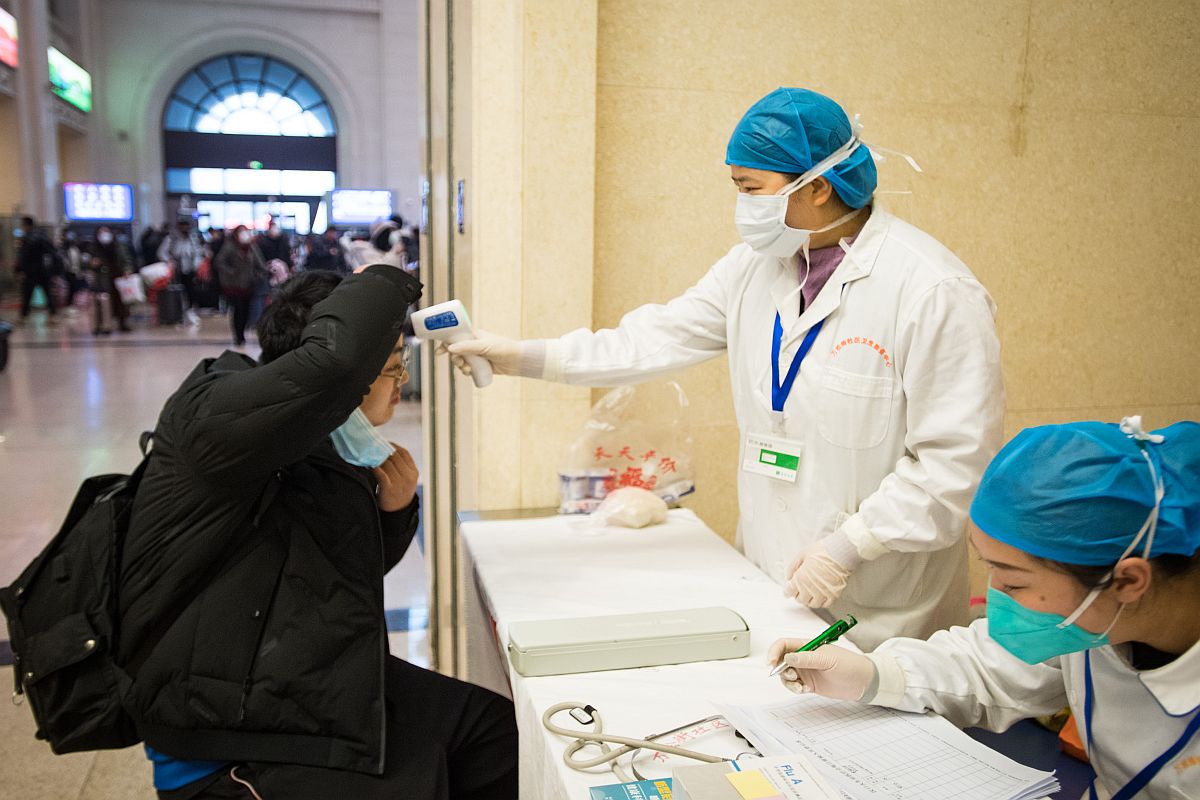PM spells out India’s position on China
I n a recent interview to Newsweek, the Prime Minister, discussing Indo-China relations, commented, “For India, the relationship with China is important and significant.
The new imported infections also accounted for all of the new confirmed cases in mainland China, placing more pressure on authorities to screen travellers at key travel hubs.

A medical worker takes a passenger's body temperature at Hankou Railway Station in Wuhan, capital of central China's Hubei Province. (File Photo: IANS)
China on Thursday marked a major milestone in its battle against the Coronavirus pandemic as Wuhan, the epicentre of the country’s virus outbreak, reported no new infections for the first time, while imported cases surged by a record, led by new infections in the capital of Beijing.
The new imported infections also accounted for all of the new confirmed cases in mainland China, placing more pressure on authorities to screen travellers at key travel hubs.
In recent days, China has increasingly focused its counter-epidemic efforts on inbound travellers as the Coronavirus rapidly expanded its global footprint, raising the prospect of a second wave of infections arriving from abroad.
Advertisement
Beijing reported 21 new cases of infections from abroad on Wednesday, mostly people travelling from Spain and Britain. The Beijing infections accounted for the bulk of the 34 new imported cases seen in mainland China.
Wuhan — the central city where the virus first emerged in December — and its 11 million people were placed under strict quarantine on January 23, with more than 40 million other people in the rest of Hubei province entering lockdown in the following days. The rest of China also enacted tough measures to limit public gatherings.
So far, China has reported 80,928 confirmed cases and 3,245 deaths. A total of 70,420 patients have recovered.
On March 10, President Xi Jinping visited Wuhan for the first time since the outbreak began and declared that the spread of the disease was “basically curbed”.
On the same day, Hubei officials allowed people to travel within the province for the first time since January, excluding Wuhan.
On Wednesday, Hubei authorities announced they were partially opening its borders to allow healthy people from low-risk areas to leave the province if they have jobs or residences elsewhere. This also excludes Wuhan.
Life has slowly started to return to normal in the rest of the country, with people back at work, factories up and running, and schools in some regions resuming or preparing to go back to class.
However, there is concern about a second wave of infections due to an influx of cases from abroad, with an average of 20,000 people flying into China every day.
Beijing and other regions are now requiring most international arrivals to go into 14-day quarantine in designated hotels.
Elsewhere, infections from what is now a global pandemic continue to rise.
Italy, the worst-hit country outside China, reported 3,526 new cases overnight, taking the total number of infections to 35,713. The death toll stood at 2,978.
In the US, there were over 8,700 confirmed cases and more than 130 people have died due to the disease.
Globally, the number of confirmed cases were 208,512, with 8,821 deaths. These figures include the China numbers.
The disease is believed to have jumped from an animal to humans at a market that illegally sold wild game in Wuhan late last year.
The first case emerged in Wuhan on December 1, according to Chinese researchers, but it was not until January 9 the country confirmed a “new type of coronavirus”.
(With agency inputs)
Advertisement